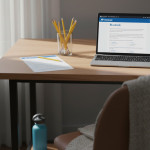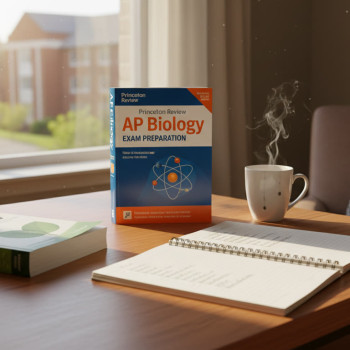Why Parent–Teacher Emails Matter (Especially for AP)
AP classes feel different from many other high school courses: they move faster, expect deeper thinking, and are often the first time a student faces college-level expectations. As a parent, you want to be supportive without micromanaging. One of the simplest — and most effective — tools you have is a thoughtfully written email to your child’s AP teacher. Done well, these emails build rapport, create clarity, and open pathways to concrete help.
When an email is the right move
Not every bump in the road needs a message to the teacher. But some situations do benefit from a direct, clear, and respectful email:
- When you need clarity about course expectations, deadlines, or the AP exam timeline.
- When your child’s performance changes noticeably over a few weeks.
- When you suspect an underlying issue — like test anxiety, a learning difference, or a sudden life event — is affecting work.
- When you want to coordinate support between home, teacher, and outside resources (tutoring, counseling).
- When your child asks for you to advocate on their behalf.
When to pause — and why
A quick check-in after a missed homework or a single low test score can sometimes be premature. Teachers expect students to have ups and downs. Encourage your child to try addressing the issue first: asking questions in class, attending review sessions, or using teacher office hours. If those efforts don’t help after a reasonable amount of time, or if the issue affects the student’s well-being, it’s time for a parent email.

What to Ask: Practical Questions That Get Useful Answers
AP teachers appreciate emails that are concise, specific, and solution-focused. Here are categories of questions that will usually give you the most helpful responses.
1. Clarifying course structure and expectations
- What are the key unit dates and the AP exam timeline we should watch?
- How are major grades calculated (tests, projects, participation)?
- Are there recommended or required prep materials for the AP exam?
2. Understanding a grade or pattern of grades
- Can you help me understand the reasons behind my child’s recent test scores?
- Are there specific skills or content gaps you see repeatedly?
- How much weight do practice AP-style questions and in-class essays carry?
3. Asking about supports and next steps
- What do you recommend for targeted practice at home?
- Are there extra-credit or revision opportunities coming up?
- How can we best use teacher office hours, review sessions, or study labs?
4. When personal or health issues are involved
- How can we coordinate missed work due to illness, mental health, or family events?
- What documentation or timeline does the classroom follow for extensions?
- Would you be open to a brief meeting (virtual or in person) to plan a return-to-class strategy?
How to Write the Email: Tone, Structure, and Examples
Tone matters more than many parents expect. Teachers are colleagues in a shared mission: helping the student succeed. A collaborative tone — respectful, concise, and focused on solutions — sets the stage for productive communication.
Simple structure that works
- Subject line: short and specific (class + purpose).
- Opening: polite greeting and a one-sentence purpose.
- Context: brief facts (dates, assignments, grades) — avoid long narratives.
- Request: exactly what you want from the teacher (advice, meeting, clarification).
- Closing: appreciation and an offer to coordinate times.
Sample email — asking about a recent grade
Subject: AP Biology — Quick Question About Unit 4 Test
Dear Ms. Rivera,
I hope you’re well. I’m Sarah Martin, Emma’s mother. Emma was disappointed with her recent Unit 4 test score and asked whether I could reach out. We want to understand where she’s falling short and how to help her improve. Could you tell me one or two specific concepts Emma should focus on, and whether there are practice resources you recommend? If it’s helpful, we’re available for a brief 10–15 minute call next Tuesday or Thursday afternoon.
Thank you for your time and all you do for the class.
Best,
Sarah Martin
Sample email — requesting accommodations after illness
Subject: AP Calculus — Make-Up Work After Medical Absence
Dear Mr. Nguyen,
My son, Isaac Lopez, missed two weeks of class (Sept 8–19) due to surgery. He’s eager to catch up responsibly. What is the best way for him to complete missed work and assessments? Is there a list of priority topics he should cover first? We can provide doctor’s notes as needed. Would you be available for a short meeting (virtual or in person) to plan a catch-up schedule?
Appreciate your guidance.
Sincerely,
Maria Lopez
What Teachers Appreciate (and What to Avoid)
Teachers are deeply committed but also busy. Emails that make it easy to respond and that respect a teacher’s time lead to better outcomes.
Do:
- Keep it brief and specific. One to three short paragraphs usually do the trick.
- Offer available times for a meeting instead of asking the teacher to propose all options.
- Include relevant facts (student’s full name, class period, specific assignment or date).
- Be collaborative — ask for recommendations, not demands.
Don’t:
- Send messages in anger. Wait 24 hours if you’re upset — a calmer note is far more effective.
- Micromanage. Teachers need space to apply their professional judgement.
- Include unrelated complaints about other school policies in a student-focused email.
Turning Teacher Feedback into a Home Plan
An email is the beginning of a cycle that should end with clear next steps. Use the teacher’s reply to create a short, realistic plan with your child.
Sample follow-up plan
- Week 1: Review teacher-identified concepts for 30 minutes, 4 days a week. Use practice problems and teacher handouts.
- Week 2: Attend one teacher office hour and one study group session. Do a timed practice of one AP-style section.
- Week 3: Take a second practice test and review missed questions with a tutor or parent.
How Sparkl’s personalized tutoring can fit
Sometimes home plans need a partner. Personalized 1-on-1 tutoring — with tailored study plans and expert tutors who know AP expectations — can accelerate improvement. Sparkl’s approach, which blends one-on-one guidance with AI-driven insights to track progress, can be helpful for students who need targeted practice, pacing strategies, or structured review between teacher meetings. Mentioning such options in a follow-up conversation with the teacher can help coordinate consistent support.
Practical Templates You Can Copy and Adapt
Below are short, adaptable templates for common situations. Keep them as a quick reference so you never scramble for words when a timely email could help.
Template: Check-in after a pattern of low grades
Subject: AP [Subject] — Request for Guidance
Dear [Teacher Name],
I’m [Your Name], [Student Name]’s parent. Over the past month, my child’s grades in your class have dropped and we’re concerned about the trend. Could you share one or two specific areas where you think they’re struggling, and any recommendations for targeted practice? We’re happy to set up a short meeting if that’s easier.
Thank you,
[Your Name]Template: Coordinating make-up work
Subject: AP [Subject] — Make-Up Work for [Dates]
Dear [Teacher Name],
[Student Name] missed class on [dates] due to [reason]. Could you please let us know the priority items to make up and any deadlines? We can provide documentation if needed. Thank you for your help.Sincerely,
[Your Name]Using Meetings Wisely: What to Bring and Ask
If a meeting (virtual or in person) follows an email, make the most of it. Treat the teacher as a problem-solving partner and come prepared.
Bring:
- Specific samples of work or tests that raised concerns.
- A short list of questions from the teacher’s reply.
- Clear availability for follow-up times, and whether your child will also attend.
Ask:
- What is one skill the student should master in the next two weeks?
- What practice mimics the way you assess students on tests?
- How will you communicate progress back to us?
Sample Progress Table: How Small Steps Add Up
Use a simple table like the one below to track short-term goals, who’s responsible, and how you’ll measure success. Share it with the teacher if helpful.
| Goal | Actions | Who | Measure | Timeline |
|---|---|---|---|---|
| Master key concept (e.g., AP Physics free-body diagrams) | Complete 10 targeted practice problems; meet teacher once | Student + Teacher | 80% correct on practice set | 2 weeks |
| Improve timed essay structure | Practice one prompt weekly; get tutor feedback | Student + Sparkl Tutor | Score improvement on rubric by 1 band | 4 weeks |
| Reduce test anxiety | Short mindfulness routine before tests; simulate test conditions once | Student + Parent | Student self-report lower anxiety; better focus | 3 weeks |
When to Escalate: Counselor, Admin, or a Different Conversation?
If you’ve emailed and met with the teacher but don’t see progress, consider who else might help. A school counselor can coordinate supports (tutoring, accommodations, mental health referrals). If a policy or safety issue is involved, the department chair or an administrator may need to be looped in. Always keep the student’s dignity front and center; the best outcomes come from coordinated, empathetic teams.
Tips for Modeling Independence
Your goal, especially in high school, is to help your child learn to advocate for themselves. Encourage them to:
- Try a direct but polite message to the teacher first for minor questions.
- Use class time and office hours proactively before asking for parental escalation.
- Bring work samples to any meeting so conversations focus on concrete evidence and next steps.
When your child struggles to write that first message, you can draft a short note for them to edit and send — that’s coaching rather than doing the work for them.

Closing Thoughts: Keep It Simple, Warm, and Focused
Parent–teacher emails are small investments that pay off. They create clarity, build relationships, and help your AP student get the targeted help they need. The best messages are concise, respectful, and solution-oriented: say who you are, why you’re writing, and what you’d like to happen next.
If your child needs additional, personalized practice beyond what the classroom offers, consider structured 1-on-1 tutoring to bridge specific gaps. Services that pair expert tutors with tailored study plans and progress-tracking (including AI-driven insights) can make the teacher’s recommendations easier to turn into measurable improvement — especially in the months leading to an AP exam.
Above all, remember this: your role is to support, advocate, and gradually hand the reins to your child. Thoughtful communication with teachers is one of the most powerful tools you have to make that transition successful.
Quick Checklist: Ready-to-Send
- Have the student try first (for minor issues).
- Include full student name and class period in any parent email.
- Keep the message short, and suggest times for follow-up.
- Ask a specific question and request a concrete next step.
- Respect teachers’ time — be collaborative, not confrontational.
With a little planning and the right tone, parent–teacher emails can become a reliable bridge between home and classroom — and a steady engine for your student’s AP success.























No Comments
Leave a comment Cancel